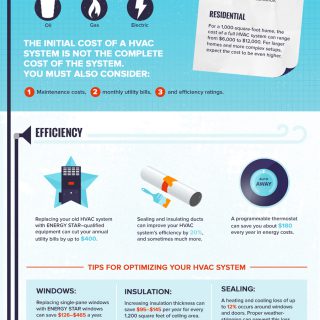The Future Of Home Home Heating - Just How Heat Pump Technology Is Progressing
The Future Of Home Home Heating - Just How Heat Pump Technology Is Progressing
Blog Article
Content Produce By-Merritt Oliver
Heat pumps will certainly be an important technology for decarbonising heating. In a scenario regular with governments' announced energy and environment dedications, their global capacity doubles by 2030, while their share in heating rises to one-quarter.
They function best in well-insulated homes and depend on electrical power, which can be provided from a sustainable power grid. Technical breakthroughs are making them much more reliable, smarter and less expensive.
Gas Cells
Heat pumps utilize a compressor, cooling agent, coils and fans to move the air and warmth in homes and home appliances. They can be powered by solar power or electrical energy from the grid. They have actually been obtaining appeal due to their low cost, silent operation and the capability to create electricity throughout peak power need.
Some companies, like IdaTech and BG MicroGen, are working on fuel cells for home heating. These microgenerators can change a gas central heating boiler and create a few of a home's electric needs with a link to the electrical energy grid for the rest.
But there are reasons to be hesitant of using hydrogen for home heating, Rosenow says. It would be expensive and ineffective contrasted to various other modern technologies, and it would add to carbon emissions.
Smart and Connected Technologies
Smart home technology enables home owners to connect and control their gadgets remotely with making use of mobile phone apps. For instance, smart thermostats can discover your home heating preferences and automatically adjust to maximize energy intake. Smart lighting systems can be controlled with voice commands and instantly turn off lights when you leave the area, reducing power waste. And clever plugs can keep an eye on and handle your electrical usage, enabling you to recognize and limit energy-hungry home appliances.
The tech-savvy household illustrated in Carina's meeting is a great illustration of how residents reconfigure space heating techniques in the light of brand-new clever home technologies. They rely upon the devices' computerized features to accomplish everyday changes and regard them as a practical methods of conducting their heating methods. As such, they see no factor to adjust their practices even more in order to make it possible for flexibility in their home power need, and interventions aiming at doing so may deal with resistance from these households.
Electricity
Since warming homes accounts for 13% people exhausts, a switch to cleaner alternatives can make a large difference. Yet what is it worth encounters obstacles: It's costly and needs comprehensive home remodellings. And it's not constantly compatible with renewable resource sources, such as solar and wind.
Until lately, electrical heatpump were too expensive to take on gas models in many markets. But brand-new advancements in style and materials are making them much more economical. And much better chilly climate efficiency is allowing them to work well also in subzero temperatures.
The next step in decarbonising home heating may be the use of warmth networks, which draw heat from a central resource, such as a nearby river or sea inlet, and distribute it to a network of homes or buildings. That would certainly minimize carbon emissions and enable homes to capitalize on renewable resource, such as green electrical power from a grid supplied by renewables. This option would be less expensive than switching over to hydrogen, a nonrenewable fuel source that needs brand-new infrastructure and would just decrease CO2 discharges by 5 percent if paired with improved home insulation.
Renewable Energy
As electrical power prices go down, we're starting to see the same trend in home heating that has driven electrical autos into the mainstream-- but at an even much faster rate. The solid climate situation for electrifying homes has actually been pushed further by brand-new study.
Renewables represent a considerable share of contemporary warm consumption, but have been offered restricted policy interest internationally contrasted to various other end-use sectors-- and even less focus than power has. In part, this shows a mix of consumer inertia, divided incentives and, in several countries, subsidies for nonrenewable fuel sources.
Highly recommended Reading might make the shift less complicated. For instance, heat pumps can be made more power reliable by replacing old R-22 refrigerants with brand-new ones that do not have the high GWPs of their predecessors. Some professionals also picture district systems that draw warmth from a nearby river or sea inlet, like a Norwegian fjord. The cozy water can then be made use of for cooling and heating in a neighborhood.